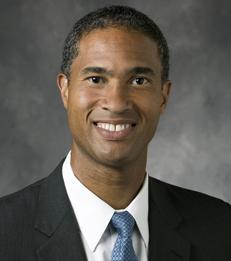Opinion
Getting More Jobs and Higher Wages
—


Maximizing employment has been the Fed’s second mandate since Congress handed it to the central bank in 1977, but the Fed is always balancing it against its first task — keeping inflation in check and ensuring price stability.
By Peter Blair Henry
In the HBO television drama Too Big to Fail, Paul Giamatti turned out an award-winning performance as former Fed Chairman Ben Bernanke, lobbying Congress to authorize Fed and Treasury intervention in the wake of the 2008 financial meltdown.
Now something else is unfolding at the Fed that could make for great cinema, and aspiring cinematographers could have fun debating who should play the Fed’s new chair, Janet Yellen. But hers is a movie of a different genre, as evidenced by the Fed’s focus on labor market dynamics during its “Sundance for Central Bankers” meeting in Jackson Hole last month.
Typically, the Fed focuses on financial markets, exchange rates and the like. This year, Yellen, her Fed colleagues and other influential central bankers from around the world listened to a very different set of scholars present research on forces such as demographics, wage dynamics and job polarization (the decline of mid-skill jobs) that are reshaping supply and demand in the workplace. This signals a fundamental shift in the way our nation’s top monetary authority is assessing policy.
Read full article as published in Ozy
___
Peter Henry is the Dean of the Leonard N. Stern School of Business, Dean Richard R. West Professor of Business and William R. Berkley Professor of Economics & Finance.
Now something else is unfolding at the Fed that could make for great cinema, and aspiring cinematographers could have fun debating who should play the Fed’s new chair, Janet Yellen. But hers is a movie of a different genre, as evidenced by the Fed’s focus on labor market dynamics during its “Sundance for Central Bankers” meeting in Jackson Hole last month.
Typically, the Fed focuses on financial markets, exchange rates and the like. This year, Yellen, her Fed colleagues and other influential central bankers from around the world listened to a very different set of scholars present research on forces such as demographics, wage dynamics and job polarization (the decline of mid-skill jobs) that are reshaping supply and demand in the workplace. This signals a fundamental shift in the way our nation’s top monetary authority is assessing policy.
Read full article as published in Ozy
___
Peter Henry is the Dean of the Leonard N. Stern School of Business, Dean Richard R. West Professor of Business and William R. Berkley Professor of Economics & Finance.
